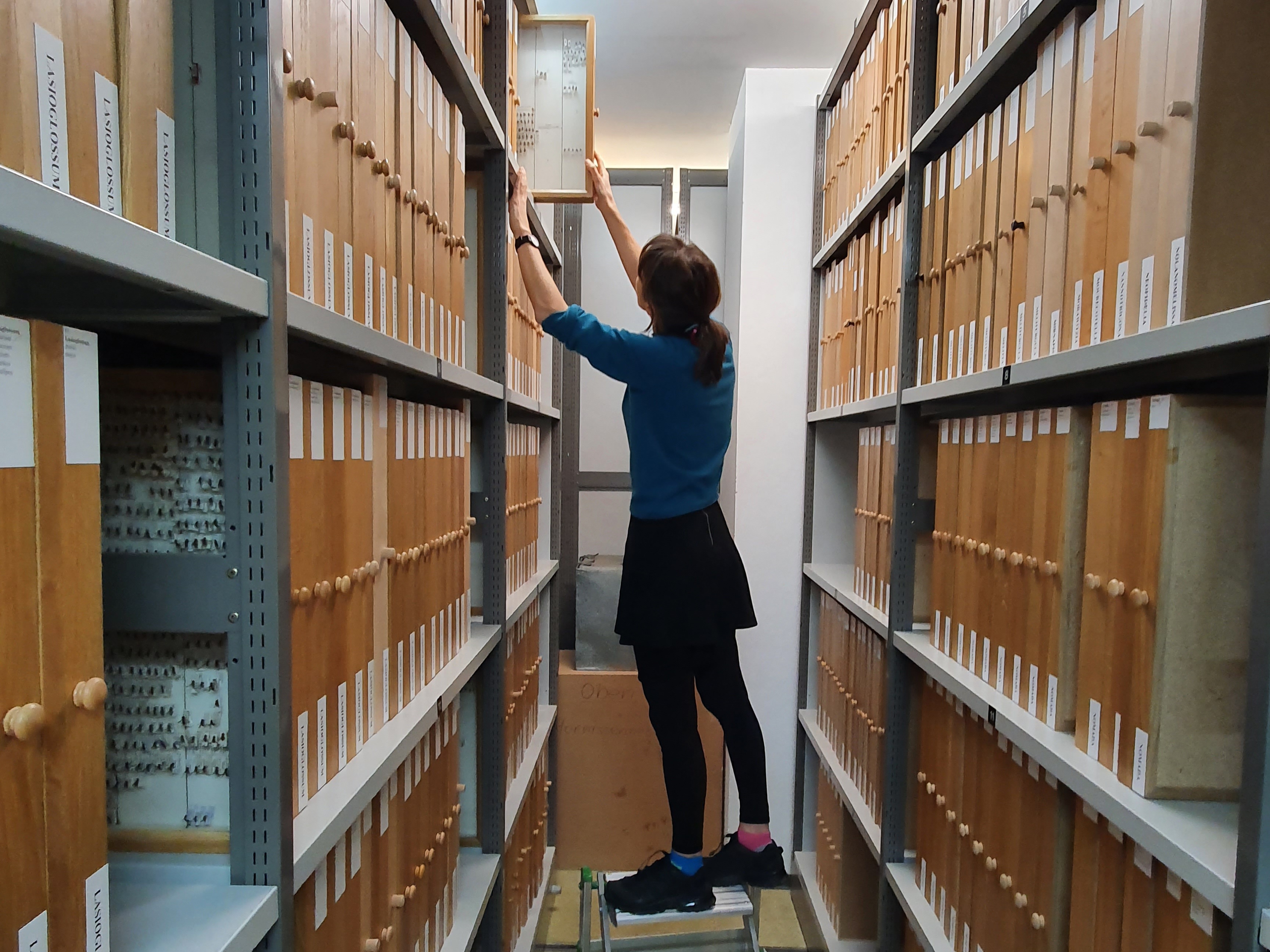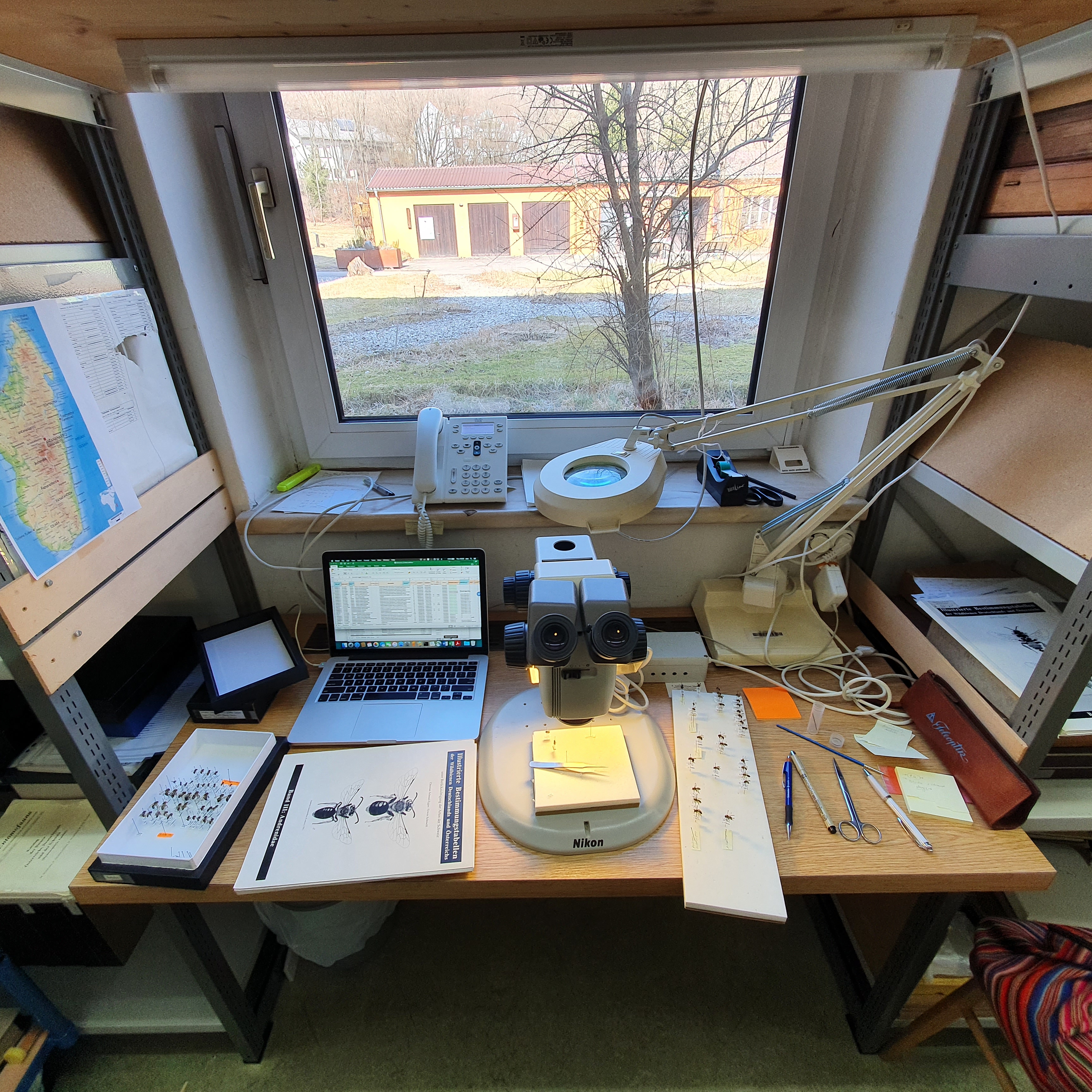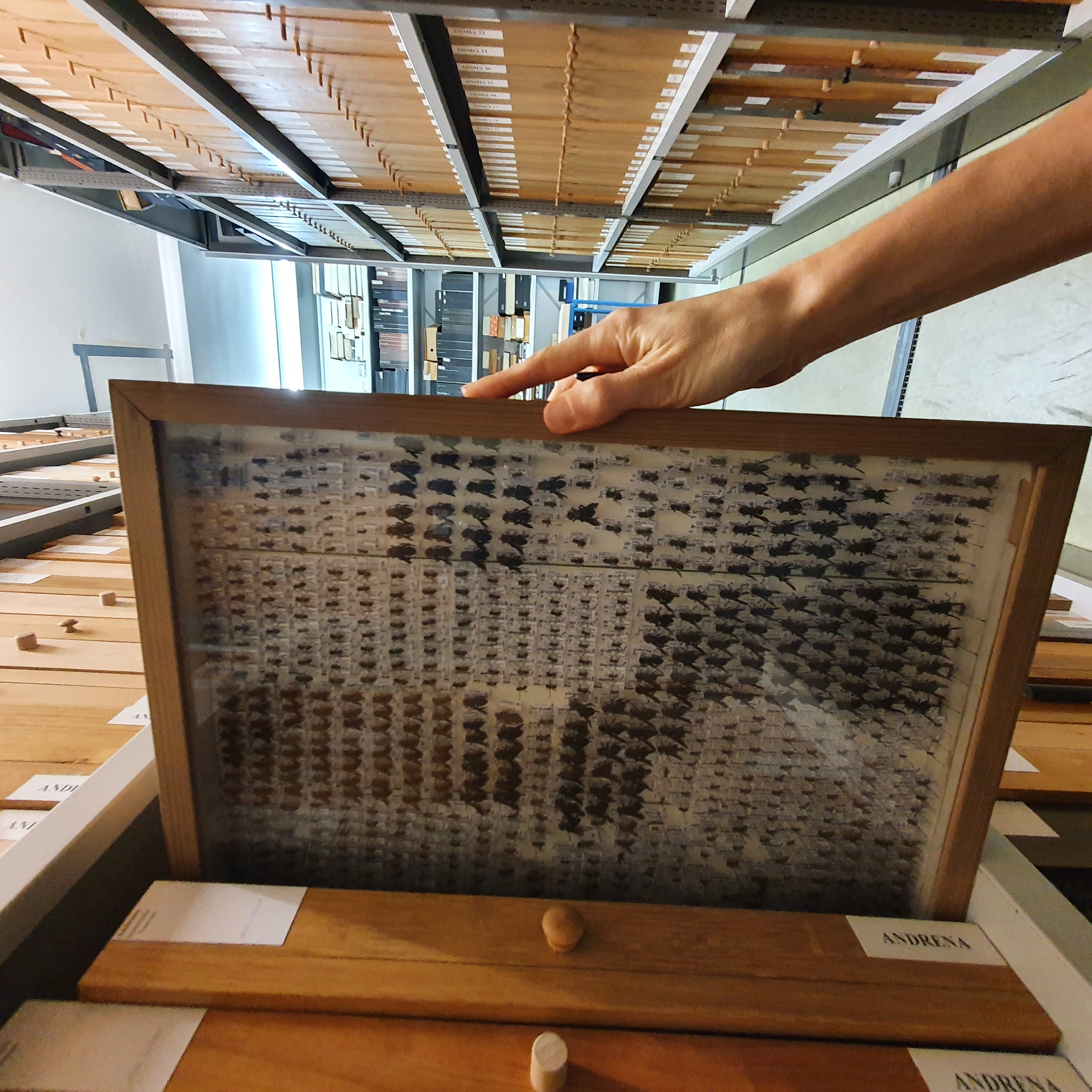Last week we visited the natural history museum in Linz, Austria (Biologiezentrum Linz), which holds the largest collection of bees in Europe. The collection contains about 690 thousand individual bees, properly prepared and labeled, and permanently stored in entomological¹ boxes. Insect collections are just a part of natural history collections, which also include pressed plants in the herbarium, bones or stuffed bodies of vertebrates, fossil specimens in rocks, and similar.
Why is it important to visit the collection for our project? Museum collections² are essential for correct species identifications. To identify wild bees collected during last year’s fieldwork, we first used taxonomic keys³. We then took the train to Linz – together with 6 boxes of bee samples. In Linz, we compared the bees one by one with the material from the Museum collection, which was determined and confirmed by experts, in order to validate (or correct) our identifications.
Correct species identifications are basic data for further analysis. For example, in order to compare different areas and different habitats by their species richness and composition, we need to know what species we collected. Accurately identified samples are also important for establishing our project collection.
Another reason why a visit to Linz was so useful was meeting the museum staff and their collaborators, experts with years of experience in wild bees. They steered us in the right direction for some species, corrected our mistakes in others, pointed out the literature we didn’t know about, and in general helped with their advice and encouragement.
Museum collections all over the world are important tools of scientific discovery and nature conservation, which are sometimes insufficiently recognized. Collections enable us to reconstruct historical species ranges, track population dynamics of endangered species, and analyze morphological changes of particular species over time. They enable the discovery of new species and reconstruction of the evolution of life on earth.
By comparing historical data from collections with more recent data, we can study the impact of different anthropogenic pressures, such as climate change or land-use change, on wild pollinators and other living organisms. A famous example is the use of museum collections of bird eggs to determine temporal changes in eggshell thickness due to exposure to pesticides. This research was key evidence in proving the harmfulness and banning of DDT in the 1960s. The recovery of bird populations after the ban is one of the success stories of nature conservation and an example of the importance of museum collections.
1 – Entomology is a study of insects (from the Greek word entomon – insect).
2 – Museum collection – when you visit a natural history or any other museum you see only the part that is open to visitors, which is only a very very small part of the museum collections. Specimens selected for display are usually less than 1% of the total museum collection. Keep this in mind on your next museum visit.
3 – Taxonomic keys – expert publications used to identify species of groups. They are mainly based on morphology.



